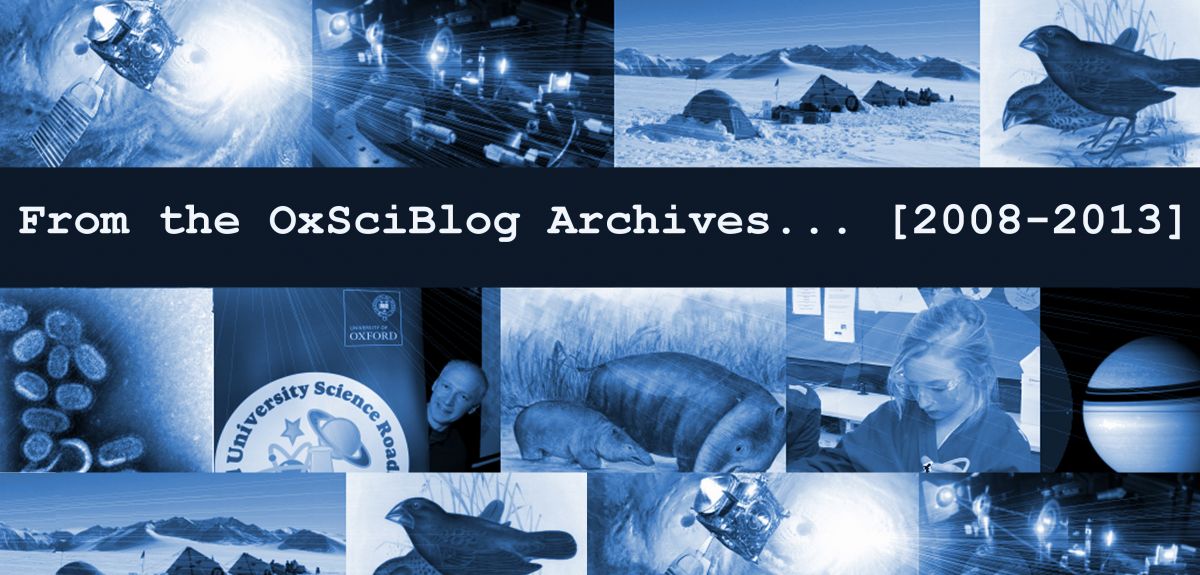
Diviner reveals Moon's extremes
The Lunar Reconnaissance Orbiter [LRO] is currently mapping the lunar surface. On board this 'robotic scout' is the Diviner, an instrument built and run by a team including Oxford University scientists.
In this week's Science two papers co-authored by Neil Bowles and Ian Thomas from Oxford University's Department of Physics report the latest findings from the instrument. I asked Neil what these results reveal about the lunar surface, how it formed and what it tells us about where to send future Moon missions...
OxSciBlog: Why is understanding lunar geology so important?
Neil Bowles: The lunar surface gives us a window into the evolution of the inner solar system. The evidence from the very early history of the Earth, such as impact craters, ancient volcanoes etc. have been virtually erased by the processes of wind and rain erosion, plate tectonics etc. These processes are not present on the Moon, so impact craters, ancient lava flows and other features are preserved.
By dating the rocks returned by the Apollo astronauts and comparing to the numbers and types of craters on the Moon, a time line for the formation of the lunar surface has been worked out and then used to date the surfaces features on the surfaces of other planets such as Mars and Mercury. The Moon underpins much of our understanding of how the Solar system formed.
OSB: What can the Diviner 'see' that other instruments cannot?
NB: Diviner is an infrared camera and so senses heat from the Moon's surface, a bit like thermal imagers used by search and rescue teams to look for people in collapsed buildings. However, Diviner is sensitive to a much broader range of temperatures and is the first instrument flown to the Moon that can measure the extreme changes in temperature you find on the surface.
For example, temperatures can get as high as about 120C during the day and as low as about -150C during the night, even colder at the poles. This information is essential for planning future exploration on the surface, both robotic and human.
Diviner is also sensitive to different types of minerals that make up the lunar rocks and soil. Different minerals 'glow' in different infrared colours, and by comparing these measurements with similar minerals made in our lab, we can learn about the surface composition of the Moon giving us insights into the processes that formed it.
OSB: How has the latest data changed our view of the Moon's history?
NB: It has given us new evidence that there were multiple processes involving molten lunar rock on the surface of the Moon during its early history, some of which have led to very specific types of mineral being exposed on the surface. This in turn helps us to understand the processes that formed the crust on the Moon as we see it today and restricts the types of theories as to how the Moon formed in the first place.
For example, the new results suggest mechanisms that helped to form one particular region of the lunar surface called the Procellarum KREEP terrain early in the Moon's history. This region is geologically distinct because of the higher concentrations of radioactive elements found there. Heating by the decay of these radioactive elements, such as Thorium, raised the temperature of the crust, and combined with the fact that we think the lunar crust is thinner here they allowed the early, primitive surface to remelt and form a silica rich magma. This then floated back up to the surface as a plume, that once it solidified is now richer in rocks such as rhyolite than the surrounding region and this what was detected by Diviner.
If this interpretation is supported by future studies, it shows that after its initial formation, there were many different subsequent processes that led to the surface of the Moon as we see it today.
OSB: What future questions do we hope the Diviner can answer?
NB: As well as studying the composition of the lunar surface, Diviner measures the rates at which different parts of the surface heat and cool and from this it is possible to work out, for example, how rocky or dusty the surface is. Measurements of rock abundance may not sound very interesting, but are essential for choosing future safe landing sites and learning how impact processes work.
The other areas of high interest are the so called polar cold traps The Moon doesn't tilt on its axis as much as the Earth so its seasons are a lot weaker. There are regions at the lunar poles where the shadows cast by high crater walls mean that sun light never reaches the floor of the crater and the temperatures get very low (<-220C). These low temperatures mean that compounds such as water that would normally just boil away into space can be trapped for as ice for billions of years.
OSB: How will Oxford scientists continue to be involved in this work?
NB: We have been involved with the Diviner instrument from its proposal, manufacture and final testing on the ground. We are currently working on a wide range of lab experiments to measure the infrared response of different types of minerals under conditions similar to those found on the Moon, so that we can compare them with measurements made by Diviner.
We are also developing computer models of how heat flows through the top of the lunar surface and then gets measured by Diviner, again using our laboratory work to check the model and then apply it to the Moon.
The Oxford Diviner team includes Neil Bowles, Ian Thomas, Simon Calcutt and Fred Taylor. Diviner was built by by NASA/JPL and is led by David Paige at UCLA.